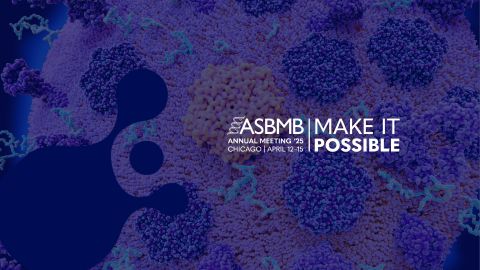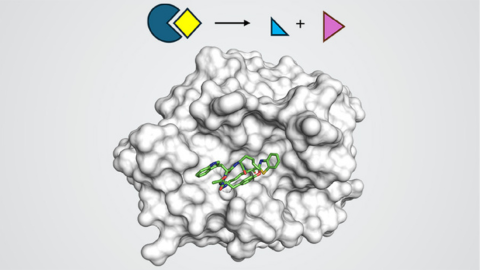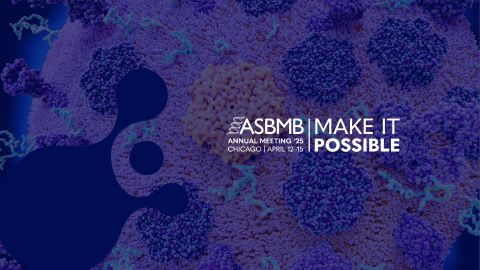How can labs reopen safely?
Labs are trying to reopen and get back to research while not spreading COVID-19. Great goal, but how do we do that? For this article, I’m taking a look at best practices for reopening labs and what we who spend our days at the lab bench need to be asking ourselves as we move forward.
Many universities and research institutes have published guidelines on their websites. When in doubt, follow your institution’s guidelines.

However, this is uncharted territory, so we should all think critically about what to do and work together (from a distance) to make sure we’re doing what’s best. To this end, I looked at the Centers for Disease Control and Prevention guide for reopening, which states, “All employers should implement and update as necessary a plan that is specific to your workplace.” I then asked how this applies to labs.
Just as labs are different from offices, every lab is different from every other lab. Everything varies, from the number of people to the building’s ventilation system. A lab with two people is going to make different decisions and rules than a lab with 20 people, and a wet lab is going to make different decisions than a dry lab, and so on. Because of this variability, I’ve included guidelines and lab-specific info, but I’ve also included questions to ask about your lab and institution.
Students, postdocs and technicians don’t set institutional policies, but we can talk to our principal investigators about how to work things in our own labs and advocate for policies if we need to. I suggest talking to your PI first about any reopening questions; that way if any big issues come up, you’re on the same page and can work things out together.
Here are the three main points from the CDC guidelines and what each might look like in lab.
1) Stay home if you are (at all) sick, or if someone you live with is sick.
By now, everyone knows this. After staying home, follow CDC guidelines for returning to work. These guidelines state that if someone had COVID-19, they should stay home at least 10 days from first symptoms or three days from the last day of fever, or, if testing is available, they should get tested (again) and test negative (though sometimes tests stay positive after the virus is gone).
What should you do if you’ve had symptoms but couldn’t get tested and don’t think it was COVID 19? What I’ve seen: People with mild symptoms stay home just in case, and, if it turns out to be nothing, they stay home another three days after recovering.
Since people likely will be staying home more than usual, it is important that employers are generous with sick leave. People who typically would come to work with a mild cold now are staying home to protect their co-workers and shouldn’t be penalized for missing work. Sick days might be more flexible for students on stipend than technicians who are paid hourly, so you should talk to your PI about these rules or perhaps contact the people in charge at your institution to get clarity. Advocate for leniency with sick time, especially for hourly workers.
2) Perform daily health checks. (This often ends up being temperature checks).
This one is tricky because it’s important to maintain social distancing while doing these checks. It does less good, and possibly does harm, to funnel every employee into one entrance and have them stand around in a crowd waiting to be screened, and then have everyone take off their masks and stand less than an arm's length from a person sticking a thermometer in their mouth.
Another potential risky spot is the case of labs that are associated with hospitals. It might seem to make sense to set up one station to screen all employees in a hospital system, but if this site is in the hospital, people are forced to go into the hospital when they might normally just go to the lab and not see anyone. This seems like a risk since a hospital is the one place where people with coronavirus are guaranteed to be.
If your institution seems to be making risky choices about screening employees, it might be worth suggesting ways to do so more safely. Infrared no-contact thermometers or sneeze guard–like barriers that people can reach around without breathing on each other are potential solutions. You might ask if multiple screening locations can be set up to reduce the chance of crowds. If you’re at a hospital, ask if these could include sites outside the hospital.
If you think screening processes could be safer, go to your PI first. If your institution has a webpage dedicated to COVID-19 policies, you can look there for contact info for the people registering concerns and answering questions. Consider getting in touch with the occupational health office, the dean, or even the head of your program. All these people have more clout than a student or postdoc and are more likely to be able to effect changes.
It’s possible, especially in big institutions, that the way it’s being done is just the way it will continue to be done. In that case, try to work out hours with your PI so you can avoid rush times and crowds at the screening sites.
3) Think about how and where exposure can happen, identify hazards in your workplace, and reduce them.
This can include wearing personal protective equipment (PPE) and cloth masks, practicing social distancing and making hygiene central, including handwashing and frequently cleaning high-touch surfaces like doorknobs. This last one is easy for labs. We wipe stuff down with ethanol all the time.
But this is also where the real decision-making comes into play, and we have to decide what it looks like in the lab. First, find out if your institution has guidelines for labs. Research centers and universities seem to vary widely. Some have every detail covered on a website. Others just say to be careful. Some leave it up to departments or individual labs.
Even those of us who have clear guidelines from the top are still learning as we go. Some guidelines might turn out to be wrong; more might be added. Some might become useless, while others become essential. As we go through the trial-and-error process of returning to lab, making a list of questions and factors influencing your own lab’s practices is helpful. You then can talk to your PI or lab mates about them and make plans together.
Questions to consider
-
Masks: Should we be wearing masks everywhere? Are they provided or are employees bringing their own? Do any exceptions to mask-wearing make sense? Possibly at one’s personal desk (not bench)?
-
Space: How spacious are the bays? How many people can work in a bay while easily maintaining distance? One person per kneehole? One person per bay? One person every other bay? Most of the labs I know of have decided one person per bay makes the most sense.
-
Staffing: How many people work in the lab space? Do we need staggered hours to allow for the distancing described above? Again, most labs I know are staggering their hours so some people work in the morning and others in the afternoon.
-
Gloves: Are typical lab rules, such as no gloves on elevator buttons or doorknobs, still in place? Can we allow people to wear gloves to open doors while still avoiding contamination from dirty lab gloves?
-
Food: Where can people eat lunch? The bays might be spaced out nicely, but lab lunchrooms are often tiny. Where is food safe? In labs associated with hospitals, is the hospital cafeteria safe?
-
Meetings: Will lab meetings be by Zoom?
-
Equipment: Will scheduling use of shared equipment change? For example, training on equipment use might be canceled, or Zoom training may be possible. Facilities with multiple pieces of equipment may have to block off time slots to minimize crowding.
Other tips and pointers such as making hallways one-way and considering space around desks can be found on Labmanager.com.
Questions for your PI or department head
What if you can’t come back to lab? While some people are coming back to work, many can’t because they are at high risk or because they are not allowed (including undergrads). What will your lab do if you can’t come back yet? What will happen to your projects? Are there data that you can analyze at home? Papers or grants you can help write? If not, will your salary and health insurance be protected? For how long?
Lastly, where can we read rules? Help make sure the guidelines that your lab or institution has decided on are communicated clearly and often. My PI sent out an email to all lab members with the current schedule of who comes in during what hours, along with mask and distance rules. If your PI is more hands-off and doesn’t do that, you might consider sending an email of your own with the rules and guidelines as you understand them, even if it’s just, “I think these are the rules. Is this correct?” That way, it’s written down somewhere and people can reference it if they need to. It’s important that everyone is on the same page, and having the rules in writing will help achieve that.
Enjoy reading ASBMB Today?
Become a member to receive the print edition four times a year and the digital edition monthly.
Learn moreFeatured jobs
from the ASBMB career center
Get the latest from ASBMB Today
Enter your email address, and we’ll send you a weekly email with recent articles, interviews and more.
Latest in Careers
Careers highlights or most popular articles

Host vs. pathogen and the molecular arms race
Learn about the ASBMB 2025 symposium on host–pathogen interactions, to be held Sunday, April 13 at 1:50 p.m.

Richard Silverman to speak at ASBMB 2025
Richard Silverman and Melissa Moore are the featured speakers at the ASBMB annual meeting to be held April 12-15 in Chicago.

Women’s History Month: Educating and inspiring generations
Through early classroom experiences, undergraduate education and advanced research training, women leaders are shaping a more inclusive and supportive scientific community.

Upcoming opportunities
Register for the May 14 ASBMB Breakthroughs webinar on biosynthesis and regulation of plant phenolic compounds.

Upcoming opportunities
Save the date for ASBMB's virtual meeting on nucleophilic proteases. Reminder: Get your ticket for #ASBMB25's closing reception at the Griffin Museum of Science and Industry before it sells out!

Emerging Investigator Seminar: Networking, career insights & cutting-edge research
At ASBMB 2025, this all-day seminar will offer a chance to hear from budding scientists, build connections and learn about scientific career opportunities.

